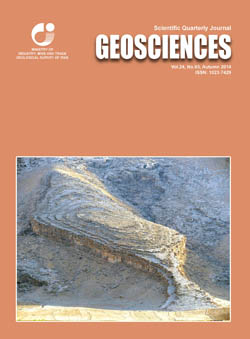Document Type : Original Research Paper
Authors
1 M.Sc. Student, Department of Geology, Islamic Azad University, Science and Research Branch, Tehran, Iran
2 Associate Professor, Department of Geology, Islamic Azad University, North Tehran Branch, Tehran, Iran
3 Associate Professor, Department of Geology , Islamic Azad University, Science and Research Branch, Tehran, Iran
4 Ph.D., Geological Survey of Iran, Tehran, Iran
5 M.Sc., Geological Survey of Iran, Tehran, Iran
Abstract
Development of advance tools in remote sensing and airborne geophysics during recent decades shows this industry importance. In this paper, aster sensor imagery (Advanced Space born Thermal – Radiometer) and airborne geophysics employed in order to zoning alteration area, mineralization system analysis and prospecting in 1:25000 Oghlansar sheet, which is situated in north of Sarab City in East Azerbaijan province. The area is located in structural zone of theEastern Alborz-Azerbaijan. The lithology of area contains Eocene-Neogene magmatic-volcanic complex such as andesite, rhyodacite, rhyolite, and granodiorite associated with pyroclastics such as tuffs, volcanic breccia and lava flows. In this investigation, we applied different methods of spectral analysis and normal classification such as SAM (Spectral Angel mapping), MF (Match Filtering) using ASTER images. Furthermore, spectral analysis methods on airborne geophysics data were engaged in order to extract shallow bodies and recognition of faults. ASTER imagery process and airborne geophysics data led to primary potential mineral map of the area. For credibility of results, 200 samples were taken and analyzed by XRD, XRF and ICP methods. Consequently, 190 samples (95%) confirmed the results of remote sensing and airborne geophysics processes. Conclusions of this research revealed that applying concurrency both the remote sensing and airborne geophysics data could be led to improve the precision of the results.
Keywords

